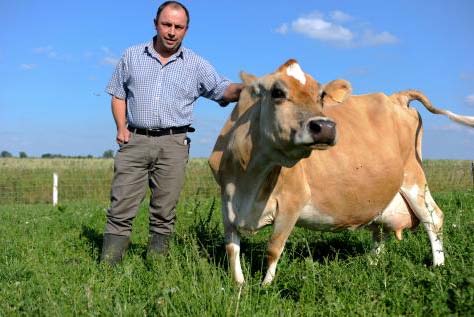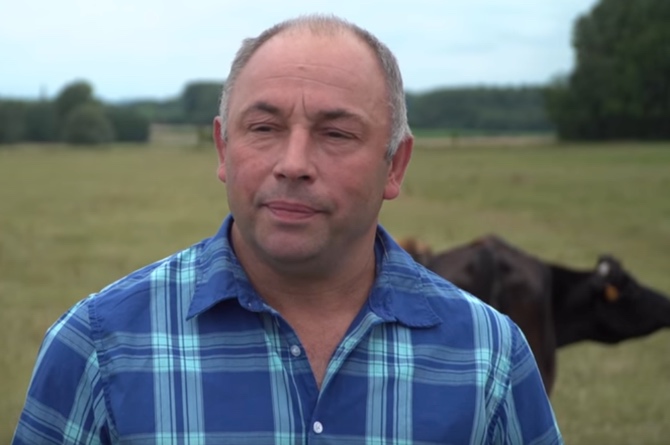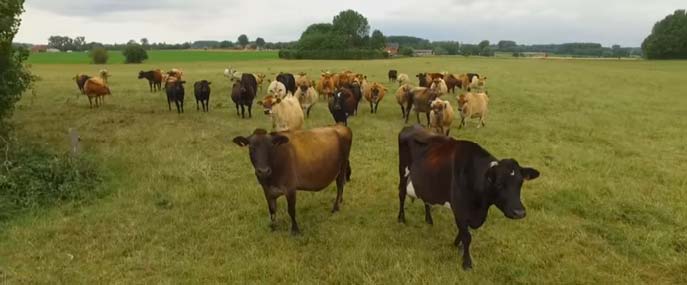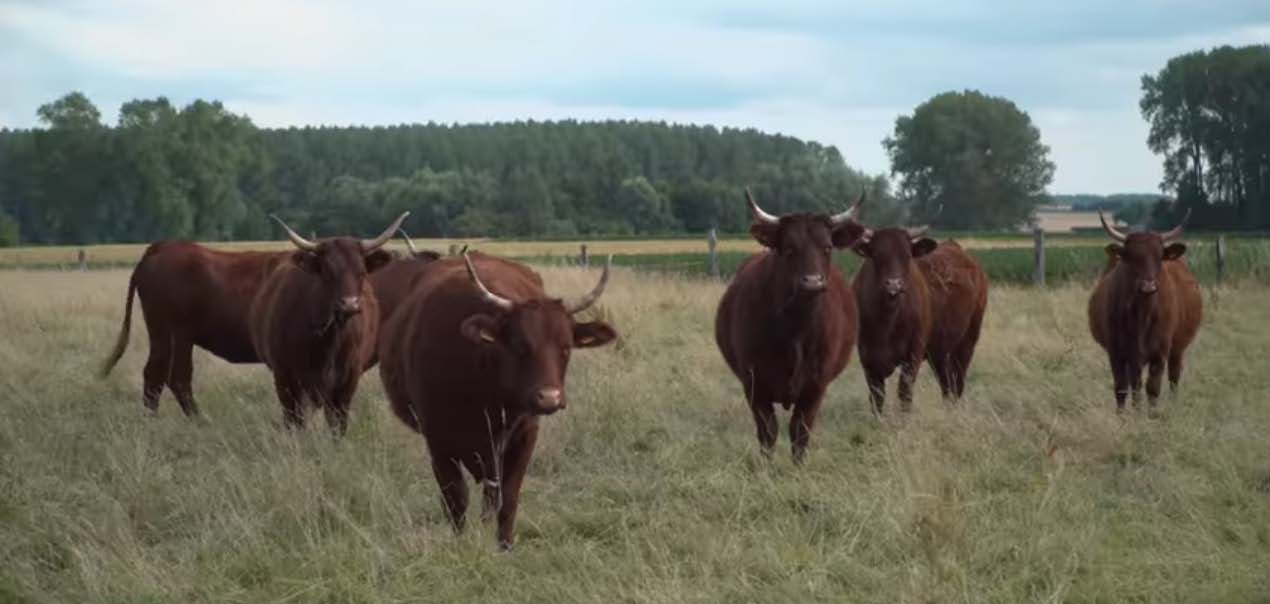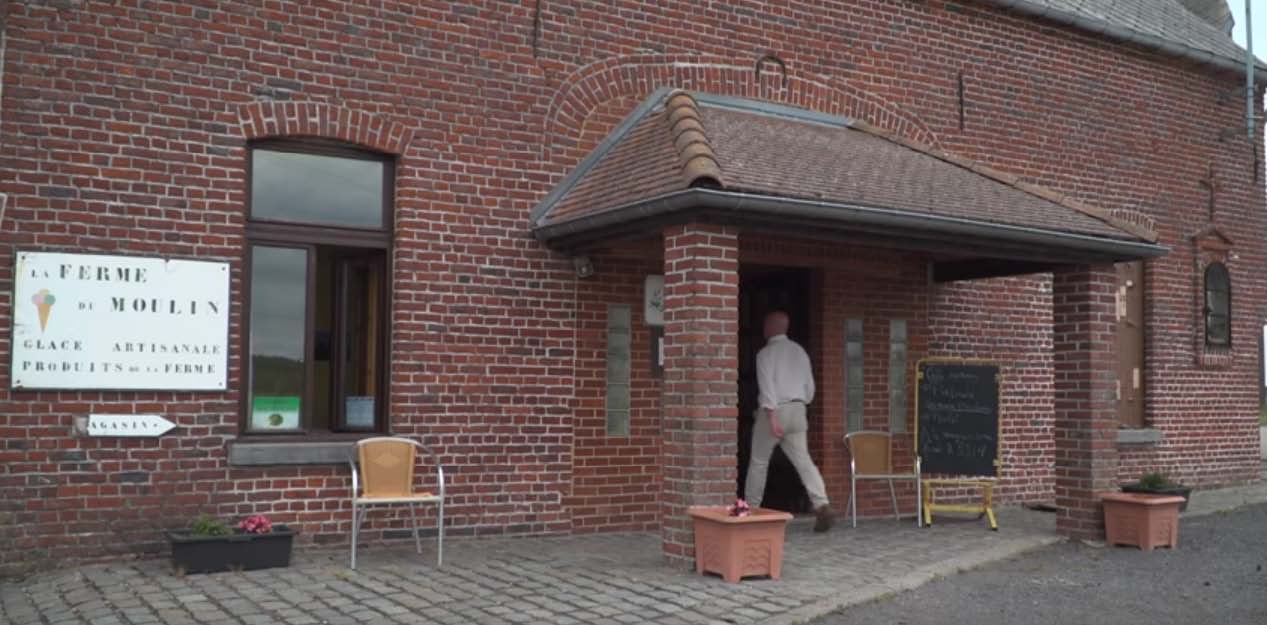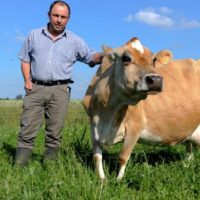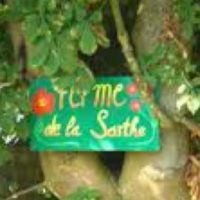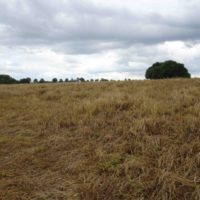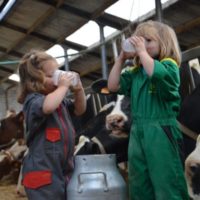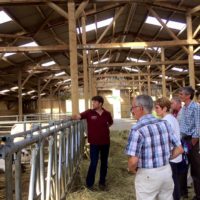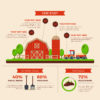Description
Background
Dany Dubois is born in 1968 (pictures 1 and 2). He graduated in Veterinary sciences in a Belgian university. He started working as a vet and, in 1993, he inherited the mixed farm of his parents. It was a small (30 ha) conventional farm combining several arable crops and a herd of dual-purpose Belgian Blue and dairy Holstein-Friesian cattle. At that time, milk was sold to a dairy factory and fattened animals to wholesale meat traders. Crops were used for feeding animals. Dany took over the farm as a hobby activity in addition to his main vet job.
In 1998, he catched a lymphoma, a type of cancer that is acknowledged in France as a professional disease due to pesticides. His doctor told him also that this cancer type is frequently recorded among farmers. The cancer was treated for five years before he recovered. A period when he thought a lot to the effects of the ‘juggernaut of the agribusiness sector’ and to the future and profitability of his own farm. He finally decided to give up his vet job and to focus on the
development of his farm.
In 2007, Dany and his wife Nathalie decided to convert the farm to organic farming. They understood that their small farm could not survive in a global market framework. Their priority was to become forage and manure self-sufficient. They also decided to diversify their productions. They progressively replaced the ancient Belgian Blue and Holstein-Friesian herd by 60 dairy Jersey cows (120 animals in total) and 30 Salers cows for beef meat production (67 animals in total). They also started raising some pigs and poultry. Green maize silage and purchased soybean meal were substituted by lucerne (Medicago sativa). Forage self-sufficiency was achieved through a grassbased diet for both cattle types by a good management of grazed permanent grasslands, conserved lucerne for winterfeeding, and fodder cereal and pulse grain produced on the farm as concentrate feed. Crop fertilization was based on farmyard manure compost. Dany and Nathalie developed a shop in the farm, started producing butter, ice cream, yogurt, sorbet, cheese, raw milk and sold these dairy products, veal, beef, pork and poultry meat and eggs in their own shop. Consequently, they controlled the whole food chain, from production to marketing, from soil to clients.
The farm has now an area of 83 ha, 38 ha of arable land including about 30 ha of lucerne and 45 ha of permanent grasslands (picture 3). On arable land, the crop rotation begins with three to four years of a lucerne-based forage mixture followed by one or two years of cereal and cereal/pulse mixtures (triticale or spelt-oats-fodder pea) for fodder grain production. Lucerne mixture contains also red clover (Trifolium pratense), cocksfoot (Dactylis glomerata), hybrid ryegrass (Lolium x boucheanum), and timothy (Phleum pratense). It is harvested three to four times a year and conserved for the housing period as hay or silage. Grains are regularly crushed by the mobile mill of a contractor for making the concentrate feed of livestock ration.
Detailed description
In the last 25 years, Dany and Nathalie aimed at developing a thrifty and self-sufficient system, resilient and resistant to crisis. This was achieved by decreasing production costs, diversifying productions, processing raw products, developing a customer base and a marketing strategy for selling processed products.
Although the farm grew up from 30 to 83 ha in 25 years, investments in buildings and machinery were limited. For instance, the choice was made to invest first in butter and not in cheese production because investments in machines are lower for butter. Butter has also not to be stored, it is sold quickly. This reduces investments in buildings and storage shelving units.
A rotational grazing system, inspired by the ‘Pochon’s method’, a famous farmer from Brittany (France) who developed a system based on white clover, was applied to grazed permanent grasslands. The area devoted to Jersey dairy cows (picture 4) is grazed during an extended period from March to December. It is divided into 25 plots that are grazed for about two days per plot and per grazing cycle. Rest periods range from 40 to 50 days according to seasons. The spontaneous vegetation of grassland is dominated by perennial ryegrass (Lolium perenne) and white clover (Trifolium repens). Cocksfoot, plantain (Plantago lanceolata) and tall fescue (Festuca arundinacea) are also widespread. Nitrogen fixation by clover boosts grass yields. Clover also improves animal intake and forage quality. Lactating cows are supplemented by a concentrate feed mixture made of cereal and pulse grain. Jersey cows are particularly well adapted to grass transformation into milk thanks to their high intake capacity and rustic character compared to Holstein-Friesian breed. In winter, they are fed with lucerne hay or silage, green cereal/pulse silage, and grain mixture. However, the housing period is restricted to three months. Winter feeding costs are thus very low.
This system is also very healthy for the animals.
The grazing system is simpler for suckler Salers cows (picture 5) and heifers.
Overall stocking rate is 2.5 livestock units (LU) per ha of grassland area and about 2 LU per ha of agricultural area.
Results
Total annual dairy production reaches 300,000 litres. It corresponds to an annual average of about 5,000 litres per cow (the average in the UK in conventional farming is about 6,000 l/cow in Jersey breed). Half of the milk production is delivered to a dairy factory. The other half is processed in the farm into a variety of dairy products and sold in the farm shop. This short and local marketing system is a way to control price. Whatever the level and the variability of World market prices, farm prices are stable and fair.
The high fat milk content of Jersey breed (5.5% fat) is particularly well adapted to cream production that can be processed into butter and ice cream. Only 16 to 17 litres of milk are necessary for producing one kg of butter. The ratio is close to 22 litres for one kg for most other dairy breeds.
About 150 kg of butter are sold every week in the farm shop all the yearlong. There is no winter decrease thanks to high conserved forage quality. Cows ingest about 15 kg of dry matter per day and per animal including about 12 kg of hay and silage grass at that period of the year.
Pig breed is local (Landrace and crosses). Skimmed milk, the by-product of butter production, is used for feeding piglets in complement to farm cereal grain.
With regard to beef meat production, Salers bulls and heifers are slaughtered at 42 months. Carcass weight reaches then 420 kg. They are classified in R-O category of the European system. Meat is cut by a butcher, vacuum packed and sold in farm shop.
Both cattle breeds are easy to raise. Calving is natural, they are disease resistant, and the grassbased system and the extended grazing period reduce workload a lot by decreasing cleaning and feeding work in barn.
A large part of productions is sold in the farm shop (picture 6), another part is sold to a minimarket, a bakery, restaurants, school canteens and joint purchasing groups. The choice has been made not to sell products to supermarkets because of their strategy to put pressure on producers for getting minimum product prices. Recently, a client list has been drawn up. Emails are regularly sent to members of this mailing list for announcing availability of specific products.
Clients are from the region and also from Flanders, Brussels and more remote places. They acknowledge the quality of the farm products. It is also worth noting that the difference between farm and supermarket prices is very small. Added value remain in the farm, there is no need to increase price more.
This agroecological system has been able to create 2.5 jobs on the farm. Dany and Nathalie are indeed now helped by their oldest son François.
Adoption criteria
The adoption of this resilient, thrifty and self-sufficient system has been motivated by survival. In 1993, the farm was too small for providing a decent income to a family. The alternative would have been to enlarge farm size which would have been difficult because of access to land problems and would also have required massive debt.
Dany’s health problems were also a strong motivation for converting the farm to organic farming.
The success of this farm is based on a progressive, well-thought transformation, and on a clear strategy that was also defined little by little for facing agricultural income degradation. The family designed this strategy for escaping from the well-known ‘scissor effect’ that consists in the continuous increase of input price and the fluctuation and decrease of agricultural product price.
A strength of this farm is its coherent approach. Innovations did not consist in the adoption of isolated techniques but in a holistic approach where all elements are complementing each other and ensure the profitability of the whole system.
Future prospects
According to Dany, the conversion to organic farming is first and foremost an intellectual revolution. It also requires more knowledge for optimising livestock management.
Time availability is the most limiting element. Not all dairy production can for instance be processed and sold in the farm. Another job could be created but the cost of an employee would be too high.
A meat cutting workshop could be built in the future. This will maybe be the next project.
The approach can be adopted by any farmer by changing what has to be changed for adapting techniques and system to local conditions of each farm.

